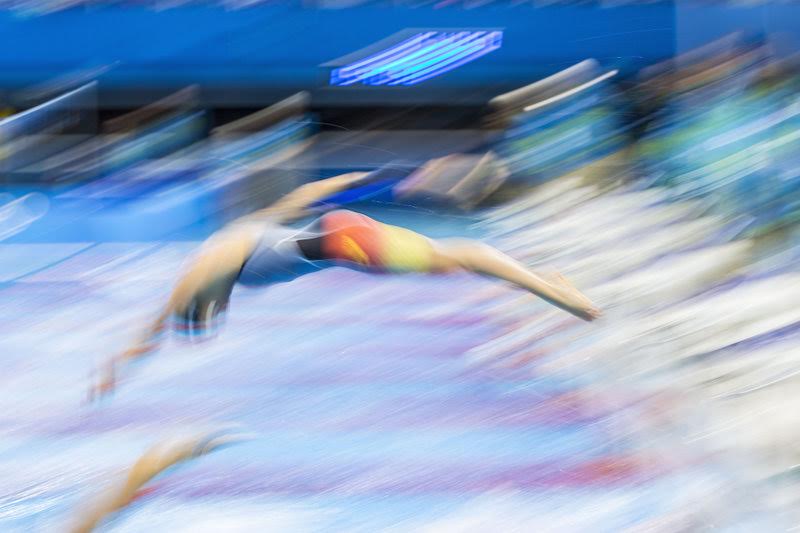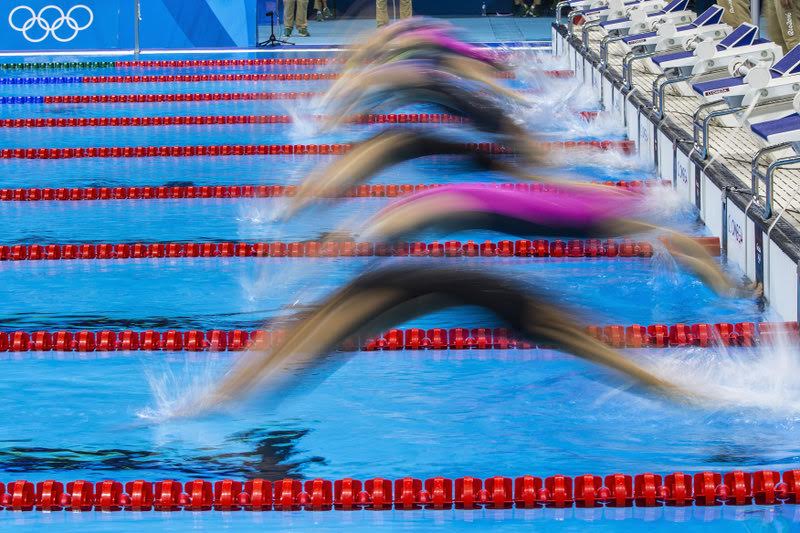Tucker & The Fallacy Of “T” When It Comes To Reasons Why Transgender Athletes Don’t Belong In Women’s Sport

Ross Tucker, a PhD in exercise physiology who runs the Science of Sport podcast and is a leading brain-with-voice on performance analysis, has shot an arrow to the heart of rules that concentrate on testosterone levels to determine whether transgender athletes can compete in women’s sports such as swimming.
In response to the often aggressive and vile debate blown up by a decision of the Ivy League and the NCAA in college sport in the United States to allow Lia Thomas to compete and dominate some of events in women’s racing this winter just two seasons after the athlete was racing for the Pennsylvania University men’s team, Tucker took to Twitter to explain the fallacy of “T”.
In a long thread, Tucker nods to the impact of one of the most significant “lived-experience” impacts in women’s swimming, the GDR’s State Research Plan 14:25, when he writes: “Recall that women’s sport exists to exclude people who do not experience androgenisation during puberty and development.”
A CBS sports analyst, science and research consultant for World Rugby and an ambassador and scientific advisor to Virgin Active and Adidas, Tucker’s take on the role of testosterone in performance sport could hardly be more timely.
USA Swimming, in a move likely to prevent Thomas from gaining access to women’s racing in international waters, recently issued new rules that require athletes transitioning from their birth gender to the gender of identity and choice.
The USA Swimming Releases Athlete Inclusion, Competitive Equity and Eligibility Policy notes:
The elite athlete policy will be implemented by a decision-making panel comprised of three independent medical experts and eligibility criteria will consist of:
- Evidence that the prior physical development of the athlete as a male, as mitigated by any medical intervention, does not give the athlete a competitive advantage over the athlete’s cisgender female competitors.
- Evidence that the concentration of testosterone in the athlete’s serum has been less than 5 nmol/L (as measured by liquid chromatography coupled with mass spectrometry) continuously for a period of at least thirty-six (36) months before the date of application.
It is not known whether Thomas, who on Saturday added the 100y freestyle title to her dominant wins in the 200y and 500y finals at the Ivy League Championships and was also the swiftest swimmer in the women’s 1650y free, would be able to comply with that requirement a year from now when reaching a third year into transition.
The NCAA had stated that it would drop a “free-for-all” access to women’s sport by transgender athletes in favour of following the USA Swimming guidance but ahead of the Ivy League Championships, with talk of legal action in the air, the college sports regulator bowed to the Ivy League’s policy of allowing what many in swimming believe to be patently unfair.
Today, Tucker sends a stark “you’ve got it all wrong” message to USA Swimming and those thinking along the same lines at FINA, the global regulator, as they formulate a policy and rule for transgender athletes. The current rulebook would be unable to prevent with what has unfolded in Ivy League and NCAA competition in the United States.
Tucker starts his thread and explanation with this:

I want to try to explain something about testosterone and performance, since it has become the ‘fixation’ and the ‘the fix’ for inclusion policies for both DSD and trans athletes. So here’s a thread to ‘debunk’ and explain why T level, per se, is not quite the right place to look.
Ross Tucker, courtesy of Science of Sport
You can read the thread in full at Twitter, and here is the rest of his insightful, long thread in full in one run:
First, testosterone is clearly a significant driver of the biological, and hence performance, differences between M and F. Nobody should dispute that (yet they do – more on this later). What sport has done, understandably, is to try to capitalise on this “cause-effect” concept to resolve the tension that exists between self ID and entry into the closed women’s category.

Recall that women’s sport exists to exclude people who do not experience androgenisation during puberty and development. So sport said “If we can reverse the T levels, we can achieve a balance of priorities”. As we now know, this is untrue – there is too much asymmetry, and once androgenisation has occurred, some changes are irreversible (skeleton), some only partly reversible, and only a few can be “undone”. The result is retained advantage, which is why simply lowering T does not allow a balance between fairness, safety & inclusion (despite persistent claims that it can, including in the recent FIMS and IF position statement). However, the preoccupation with T persists, and even in the absence of the above, is still misplaced.
Ross Tucker. Photo: Doping, from research to deception – the book penned by Brigitte Berendonk in the early 1990s that told the story of systematic doping and State Research Plan 14:25 and how the androgenisation of girls led to dominance in women’s sport
The reason is that a snapshot of T levels (which is what we do when we sample every athlete at the World Champs) is not actually the thing that is responsible for the problem. The T has already done the work – it happens in the womb, primarily at puberty, and into adulthood, but it is not in and of itself, the problem.
That’s why it is a red herring to get sucked into debates about overlap in T levels between men and women. It’s irrelevant to look at the level of T on Day X and compare athletes and try to deduce which has the performance advantage.
All that matters is the “movie” up to that point, not a “snapshot” at that point, if this makes sense? A “snapshot” approach also invites disingenuous and dishonest portrayals of the actual importance of T, where people will say stupid things like “T has no performance effects”.
They say this because when you look at a sample of elite males, or elite females, and try to correlate T with performance, you get very weak relationships.
The Olympic 100m final finishing positions are in no way predicted by the who has highest T and lowest T. For many reasons.
You’ll also hear things like “Usain Bolt has higher T levels than teen-age girls, but many of them run 800m faster than him. Therefore, T is not that important for performance” (yep, this one actually happened). The point is this – it’s not the level of T, it’s the job done by it.
So the key is whether androgenisation occurred, and T levels at any time at life are an excellent guide to whether this binary outcome exists. It’s a “yes, it has” or “no, it hasn’t”, predicted remarkably well by whether T is high or low, but not by the actual level.
Ross Tucker
The same is true for things like VO2max in marathon runners, or height in the NBA. Nobody in their right minds would dispute that these characteristics matter for performance. But if you only looked at NBA players, height would be a poor predictor of NBA success, and if you only measured VO2max in elite marathon runners, you’d be led to believe there is no predictive power.

So what’s going on? Well, the simplest way to put it is that “Everyone in that group already has it, so of course it makes less of a difference”.
It’s like this: You need that thing to get through the door, but once you’re inside, a host of other factors are what makes the difference. The attribute is your “ticket to the dance”, but it doesn’t determine your ability to dance. There’a room for tall, there’s a room for high VO2 maxes, a room for Fast-twitch and of course, there’s an adjacent room for people who don’t have that attribute. Think of mass – there’s a room for heavyweights, a room for middleweights etc. And OK, in the case of mass, we can change rooms (within reason, anyway). A room for disability level. A room for age.
Ross Tucker. Image – everyone brings a ticket to the dance but then we have to consider the ability to dance, what kind of dance it is, and what attributes are best suited to which dance – Photo by Patrick B. Kraemer
Now run this same hypothetical, but for biological sex, male & female. What’s the “ticket” to get in? It’s not the level of testosterone. That’s the fallacy. It’s the presence (binary) of testosterone during life PLUS the ability to use it, such that androgenisation has occurred.
So that gets you through the door, into the appropriate ‘dance’. But once there, everyone has the ticket – they’re either androgenised (male room) or not (female room). And the door between them must remain locked. Trying now to measure T levels, and lower them, is irrelevant.
Ross Tucker
Anyway, hope the analogy works. We create “spaces” for sport, into which we allow only certain people, and then recognise that once in that space, all the other things make the difference. That’s the whole point! It’s why teenage girls can beat Bolt in an 800m. It’s not the T!

This is also why it’s so stupid to keep saying “But TW are not winning everything”. Point is there’s a group in one room (male, androgenised) & a group in another (female, unandrogenized), and then everything else plays out. Some people in the male room are very unathletic and so if they climb through the window to enter the female room, they’ll still be outperform by exceptional women who have all those attributes that are meant to determine the result. That says as much about the women’s exceptionalism as it does the man’s relative mediocrity!
Ross Tucker. Image: Lia Thomas, right, and her coach at UPenn Mike Schnur – screenshot courtesy of the Daily Mail
Which is the same phenomenon in play when a heavyweight sneaks into a middleweight dance and loses, or able-bodied athletes race the paralympics and failsto win. That failure doesn’t invalidate the essential difference between rooms. You have to compare “like” vs “like” for that.
That “like” for “like” matchup is where we see thousands, possibly hundreds of 1000s, of males, with performance capabilities greater than the best female. That specific corner of the room (elite athlete, scholarship-seeking athletes) reveals how significant M vs F biology is.
Ross Tucker
Anyway, enough of the room analogy. We can enjoy the dance, but we have to sure people have the right tickets to the right place!
End of thread.
SOS has made FINA aware of the thread and the issues it raises relevant to the formulation of international rules that will come under scrutiny for their ability to preserve women’s sport for biological women.
On the matter of what looked like a sure-fire case for holding back or “sandbagging” in the 200 and 500y finals at the Ivy League Championships, Tucker also ran a thread explaining why so may in swimming felt the way they did was they watched Thomas dominate the 500y free:
Meanwhile, as the United States debate goes on, many other countries around the world have leaned in the direction summed up by the latest guidance in Britain from the UK Sports Council, which summed up the findings of a review with this recommendation that back the Tucker line of thought:
What the review is recommending

As a result of what the review found, the Guidance concludes that the inclusion of transgender people into female sport cannot be balanced regarding transgender inclusion, fairness and safety in gender-affected sport where there is meaningful competition. This is due to retained differences in strength, stamina and physique between the average woman compared with the average transgender woman or non-binary person assigned male at birth, with or without testosterone suppression.
UK Sports Council. Image: Women’s sport – is it a place and case of Fair Play? – image courtesy of Patrick B. Kraemer
Sports, however, are incredibly diverse and there can be no ‘one-size fits all’ approach. This review has concluded therefore that, for many sports, there may not be a common single competition model which will meet the needs of full transgender inclusion while retaining competitive fairness, particularly in female sport.
We are therefore encouraging and advising NGBs and SGBs to define the best options for their sport and determine whether it may be possible to offer more than one version of their sport to achieve the different aims…
This Guidance also sets out the underlying principles which NGBs should consider when developing policies in this area, which are designed to create opportunities for sport to increase inclusion and the breadth of sport for everyone in society.
UK Sports Council Guidance for Transgender Inclusion in Domestic Sport in full